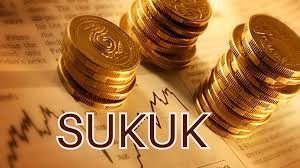Ahead Of U.S. Inflation Data, Gold Price Tests Key Resistance Amid Strong Bullish Signals

Rania Gule
Gold prices are currently moving within an extremely sensitive range, influenced by a complex mix of geopolitical tensions and economic concerns, making the metal a strong candidate for significant price action in the coming days. The precious metal began the week on a strong note, rallying to a three-week high of $3,374 on Monday morning, supported by fears over a possible escalation in the global trade war led by U.S. President Donald Trump. However, buyers quickly failed to hold onto gains, and gold came under renewed selling pressure, raising important questions about its next move amid this complicated backdrop.
In my view, the recent movements in gold are merely a prelude to greater volatility likely to unfold as the U.S. inflation data release approaches. The market is extremely sensitive right now to any political or economic development, especially those tied to the U.S., China, and Europe, given the intertwining of trade and military files. Trump’s announcement of a potential 30% tariff on imports from the EU and Mexico — alongside tariff warning letters sent to around 20 countries — triggered a wave of panic that pushed investors toward safe havens, with gold at the top of the list.
Despite the initial rush, the markets quickly demonstrated their ability to absorb political shocks. When European Commission President Ursula von der Leyen confirmed the EU would delay retaliatory measures until August, markets calmed, easing the bullish momentum in gold. This de-escalation helped the U.S. dollar regain some ground, which in turn weighed on gold and led to its pullback from session highs.
The key development now is the imminent release of the U.S. Consumer Price Index (CPI), which will act as a major driver for gold. Inflation remains the core variable steering the Federal Reserve’s monetary policy, and therefore directly impacts market sentiment toward safe-haven or risk-on assets. If inflation comes in hotter than expected, expectations of a Fed rate cut in September may be scaled back, strengthening the U.S. dollar and applying downward pressure on gold. On the other hand, weak inflation figures would boost the case for rate cuts and be strongly supportive of gold.
From my perspective, it’s important to note that markets are currently pricing in a total of 50 basis points in rate cuts by year-end, with about a 60% probability of the first cut occurring in September. Thus, any inflation surprise could significantly shift these expectations, making gold’s short-term outlook highly data-dependent.
Technically, gold is now facing stiff resistance at the 23.6% Fibonacci retracement level, around $3,377 — a critical barrier on the path toward the next major resistance at $3,499 (H1). A failure to break this level could trigger a swift move down toward support zones at $3,300 (S1) and possibly $3,250 (S2). However, a successful breakout — fueled by disappointing economic data or renewed political tension — could pave the way for a strong rally toward $3,500.
We must also consider the ongoing geopolitical risks. North Korea’s leader has pledged unconditional support for Russia’s military operations in Ukraine, and Trump recently announced plans to send Patriot missiles to Kyiv — both signals that geopolitical escalation could return to the spotlight at any moment. Furthermore, unconfirmed reports about Federal Reserve Chair Jerome Powell’s potential resignation add another layer of uncertainty, prompting investors to remain cautious.
In terms of global liquidity and central bank behaviour, the long-term outlook remains favourable for gold. Increased gold purchases by central banks over the past two years signal a gradual loss of confidence in the current monetary system and a strategic pivot toward assets that preserve long-term value. Combined with potential dollar weakness should rate cuts materialise, gold is well-positioned strategically over the medium to long term.
In conclusion, I believe gold is at a critical juncture. While the medium-term uptrend remains intact, the short-term direction will largely depend on this week’s U.S. inflation figures and any unexpected geopolitical developments. Therefore, I recommend approaching gold with tactical caution, relying on strong technical signals backed by confirmed macroeconomic news before initiating any new investment decisions.
Technical Analysis of Gold ( XAUUSD ) Prices:
The daily chart of gold (XAU/USD) reveals a complex technical formation where classical analysis intersects with momentum indicators. The price failed to break above the 23.6% Fibonacci retracement level at $3,377 — a level derived from the historical rally seen in April — leading to the breakdown of a three-day recovery streak. The clear rejection below this key technical barrier signals the presence of strong resistance in that zone. It coincides with the formation of point “C” in a potential rising wedge or continuation pattern. This adds a layer of caution to the short-term bullish outlook.
Gule is Senior Market Analyst at XS.com – MENA





